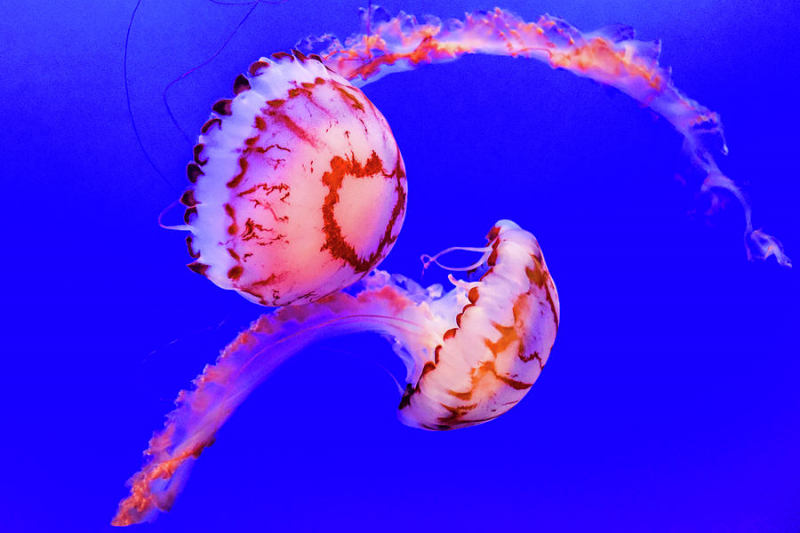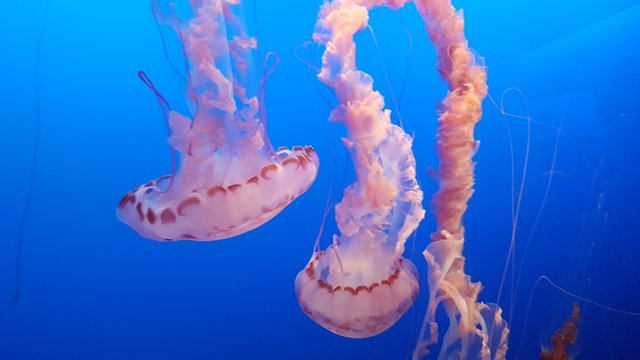Purple Striped Jelly
The Purple-Striped Jelly (Chrysaora colorata), is a species of jellyfish that exists primarily off the coast of California from Bodega Bay to San Diego. They have been observed to consume a wide range of species, including fish eggs, copepods, hydromedusae, Siphonophora, and Cladocera. When a prey meets a marginal tentacle, the tentacle rapidly releases stingers to immobilize the prey and bends inward toward the closest oral arm. Prey is carried to the gastrovascular cavity (GVC) by the oral arm, which is also employed to capture immobile prey. Although it is uncommon, this jellyfish may sting people very badly.
The purple-striped sea nettle is another name for the purple-striped jelly. When it is very young, it has a pinkish hue and lengthy, dark maroon tentacles. The dark maroon hue of the tentacles begins to fade at the mature stage, and the purple now appears as stripes on the bell. The four frilly oral arms of grownups will grow longer as they get older. As the jellyfish ages, its oral arms tend to vanish, its tentacles expand, its purple stripes start to darken, and it develops pale tentacles.












